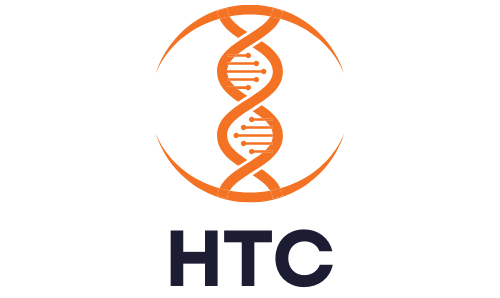The Impact of Regulatory Changes on HealthTech Investments
The HealthTech industry has been experiencing exponential growth over the past decade, driven by innovations in technology and a heightened focus on improving patient outcomes. From telemedicine to wearable health devices and precision medicine, the integration of technology into healthcare is transforming the way we diagnose, treat, and manage diseases. According to recent reports, the global HealthTech market is projected to reach unprecedented heights, fueled by the increasing adoption of digital health solutions, the rise of artificial intelligence in healthcare, and the growing demand for personalized medicine.
Central to this dynamic growth is the regulatory framework that governs the HealthTech landscape. Regulatory bodies, such as the FDA in the United States and the EMA in Europe, play a critical role in ensuring the safety, efficacy, and quality of new health technologies. These regulations are designed to protect patients and consumers while fostering innovation and competition within the industry. However, regulatory changes can also have significant implications for HealthTech investments, influencing everything from product development timelines to market access and reimbursement policies.
In this blog, we will delve into the impact of regulatory changes on HealthTech investments. By examining recent regulatory updates and their effects on the industry, we aim to provide valuable insights for investors navigating the complex and evolving HealthTech landscape. Understanding these regulatory dynamics is crucial for making informed investment decisions and capitalizing on the opportunities within this rapidly growing sector.
Understanding HealthTech Regulations
Regulations affecting the HealthTech industry encompass a broad spectrum of guidelines, standards, and requirements that ensure the safety, efficacy, and privacy of health technologies. These regulations are essential for maintaining public trust and fostering innovation while protecting patient welfare. Key regulatory bodies such as the FDA (Food and Drug Administration) in the United States, the EMA (European Medicines Agency) in Europe, and HIPAA (Health Insurance Portability and Accountability Act) for data privacy in the US, play pivotal roles in shaping the HealthTech landscape.
Definition and Scope of HealthTech Regulations
HealthTech regulations cover a wide range of aspects including product approval, clinical trial standards, data security, and privacy. For instance, the FDA regulates medical devices, digital health products, and pharmaceuticals, ensuring they meet rigorous standards before they can be marketed. Similarly, the EMA oversees medicines and medical devices within the European Union, enforcing stringent guidelines to ensure public health safety. HIPAA, on the other hand, focuses on protecting sensitive patient health information, setting standards for electronic health transactions, and safeguarding patient privacy.
Key Regulatory Bodies and Their Roles in Different Regions
- FDA (Food and Drug Administration): In the United States, the FDA is responsible for the approval and regulation of medical devices, drugs, and biologics. The agency's rigorous review process includes evaluating clinical trial data, manufacturing practices, and post-market surveillance to ensure products are safe and effective.
- EMA (European Medicines Agency): The EMA plays a similar role in the European Union, coordinating the scientific evaluation of medicines developed by pharmaceutical companies for use in the EU. The agency works closely with national regulatory authorities to ensure consistent standards across member states.
- HIPAA (Health Insurance Portability and Accountability Act): HIPAA sets the standard for protecting sensitive patient data in the United States. Compliance with HIPAA is mandatory for healthcare providers, insurers, and other entities handling health information, ensuring that patient data is kept confidential and secure.
- MHRA (Medicines and Healthcare products Regulatory Agency): In the UK, the MHRA regulates medicines, medical devices, and blood components for transfusion, ensuring they meet applicable standards of safety, quality, and efficacy.
- PMDA (Pharmaceuticals and Medical Devices Agency): In Japan, the PMDA oversees the safety and effectiveness of pharmaceuticals and medical devices, conducting reviews, inspections, and post-market surveillance.
The Importance of Compliance for HealthTech Companies
Compliance with these regulations is crucial for HealthTech companies. Adhering to regulatory standards not only ensures the safety and efficacy of products but also facilitates market access and boosts investor confidence. Non-compliance can lead to severe consequences including product recalls, legal penalties, and reputational damage, which can significantly impact a company's financial performance and market position.
Moreover, staying compliant with evolving regulations requires continuous monitoring and adaptation. HealthTech companies must invest in robust compliance programs, engage with regulatory experts, and stay abreast of regulatory updates to navigate the complex landscape effectively. This proactive approach not only minimizes risk but also positions companies to leverage new opportunities arising from regulatory changes.
Recent Regulatory Changes in HealthTech
The HealthTech industry is constantly evolving, driven not only by technological advancements but also by significant regulatory changes aimed at enhancing patient safety, fostering innovation, and ensuring the quality of healthcare products and services. In recent years, several regulatory updates across the globe have had a profound impact on the industry. Understanding these changes is crucial for investors and companies alike to navigate the regulatory landscape effectively.
Overview of Significant Recent Regulatory Changes Globally
Regulatory bodies worldwide have introduced several updates to keep pace with the rapid advancements in HealthTech. These changes are aimed at addressing emerging challenges, such as cybersecurity threats, data privacy concerns, and the need for faster approval processes for innovative treatments and technologies. Key markets such as the United States, the European Union, and Asia have seen notable regulatory shifts that shape the future of HealthTech.
Examples of Regulatory Changes in Key Markets
United States
- FDA’s Digital Health Innovation Action Plan: The FDA has launched several initiatives to streamline the regulatory process for digital health products. This includes the introduction of the Digital Health Software Precertification (Pre-Cert) Program, which aims to fast-track the approval of digital health tools by focusing on the software developer's quality systems rather than individual products.
- 21st Century Cures Act: This act includes provisions to accelerate the development and approval of new medical technologies. It also emphasizes patient involvement in the regulatory process, enhancing the consideration of patient experiences and outcomes in decision-making.
European Union
- Medical Device Regulation (MDR): The MDR, which came into full effect in May 2021, introduces more stringent requirements for the approval and monitoring of medical devices. This regulation emphasizes post-market surveillance, clinical evidence, and transparency, ensuring higher safety standards for medical devices in the EU market.
- General Data Protection Regulation (GDPR): While not specific to HealthTech, GDPR has significant implications for health data management. Companies must adhere to strict data protection and privacy requirements, affecting how health data is collected, stored, and used.
Asia
- Japan’s Regulatory Framework for Regenerative Medicine: Japan has implemented a unique regulatory framework to accelerate the approval of regenerative medicine products. This framework allows conditional and time-limited approval of regenerative therapies based on limited clinical data, fostering innovation while ensuring patient safety.
- China’s National Medical Products Administration (NMPA) Reforms: China has overhauled its regulatory processes to align more closely with international standards. These reforms include faster approval processes for innovative medical devices and drugs, increased emphasis on clinical trial data, and enhanced post-market surveillance.
The Rationale Behind These Changes and Their Intended Impact
The rationale behind these regulatory changes is multifaceted, aiming to balance innovation with patient safety and efficacy. Key motivations include:
- Enhancing Patient Safety: Regulatory updates often aim to address gaps in the existing framework, ensuring that new technologies meet rigorous safety standards before reaching the market.
- Accelerating Innovation: By streamlining approval processes and fostering collaboration with industry stakeholders, regulatory bodies aim to bring innovative products to market more quickly, benefiting patients with faster access to advanced treatments.
- Improving Transparency and Accountability: Increased emphasis on post-market surveillance, clinical evidence, and data transparency helps build public trust and ensures that companies remain accountable for their products.
- Harmonizing Global Standards: Aligning regulatory frameworks with international standards facilitates global market access for HealthTech companies, promoting cross-border trade and investment.
Positive Impacts on HealthTech Investments
Regulatory changes, while often perceived as hurdles, can significantly foster innovation and market growth within the HealthTech industry. By creating a supportive regulatory environment, these changes can accelerate the development and adoption of new technologies, ultimately benefiting both patients and investors. In this section, we will explore how regulatory adjustments have positively impacted HealthTech investments, providing examples and case studies to illustrate these benefits.
How Regulatory Changes Can Foster Innovation and Market Growth
Regulatory changes can drive HealthTech advancements by:
- Streamlining Approval Processes: Simplified and expedited regulatory pathways can reduce the time and cost associated with bringing new technologies to market, encouraging investment in innovative solutions.
- Encouraging Technological Development: By providing clear guidelines and support for emerging technologies, regulatory bodies can incentivize companies to invest in research and development, leading to breakthroughs in medical devices, digital health, and therapeutics.
- Enhancing Market Access: Harmonized regulations and mutual recognition agreements between countries can facilitate easier access to global markets, allowing HealthTech companies to expand their reach and attract international investors.
- Promoting Data Privacy and Security: Regulations like GDPR ensure that companies prioritize data protection, building trust with consumers and stakeholders, which is crucial for the adoption of digital health solutions.
Examples of Regulations That Have Spurred HealthTech Advancements
- FDA’s Breakthrough Devices Program: This program is designed to fast-track the development and review of medical devices that provide more effective treatment or diagnosis for life-threatening or irreversibly debilitating diseases. By prioritizing these devices, the FDA has enabled quicker market entry, spurring innovation in critical areas such as cancer treatment and cardiovascular health.
- CMS Reimbursement Policies for Telehealth: The Centers for Medicare & Medicaid Services (CMS) has expanded reimbursement for telehealth services, especially in the wake of the COVID-19 pandemic. This regulatory change has encouraged the widespread adoption of telehealth technologies, making healthcare more accessible and driving investment in telehealth platforms.
- EMA’s Adaptive Pathways Approach: The EMA’s Adaptive Pathways approach facilitates early access to medicines that address unmet medical needs. By allowing for iterative phases of development, approval, and monitoring, this approach supports the faster introduction of innovative therapies to the market.
Case Studies of Companies That Benefited from Favorable Regulatory Environments
Case Study 1: Teladoc Health Teladoc Health, a leader in telemedicine, experienced significant growth due to favorable regulatory changes. The expansion of telehealth reimbursement policies by CMS during the COVID-19 pandemic allowed Teladoc to rapidly scale its services. As a result, the company saw a substantial increase in user adoption and investor interest, solidifying its position as a key player in the telehealth market.
Case Study 2: Spark Therapeutics Spark Therapeutics, a gene therapy company, benefited from the FDA’s Breakthrough Therapy designation for its treatment, Luxturna, for a rare form of inherited vision loss. The expedited review process facilitated faster market approval, allowing Spark to bring this groundbreaking treatment to patients sooner. This regulatory support not only advanced patient care but also attracted significant investment, culminating in Spark’s acquisition by Roche for $4.8 billion.
Case Study 3: Illumina Illumina, a global leader in DNA sequencing and array-based technologies, has thrived under supportive regulatory frameworks. The company’s next-generation sequencing (NGS) platforms have received FDA clearance for various applications, including oncology and reproductive health. Regulatory recognition of NGS’s potential has driven investment in Illumina’s technologies, leading to partnerships and growth in precision medicine.
Challenges and Risks Posed by Regulatory Changes
While regulatory changes can foster innovation and market growth, they can also pose significant challenges and risks for HealthTech investments. Navigating these changes requires a deep understanding of the regulatory landscape and the ability to adapt quickly. In this section, we will explore the potential negative impacts of regulatory changes on HealthTech investments, providing examples of regulatory hurdles and delays, and discussing the cost of compliance, especially for startups and smaller companies.
Potential Negative Impacts of Regulatory Changes on HealthTech Investments
Regulatory changes can lead to uncertainties and challenges that may affect HealthTech investments in several ways:
- Increased Time to Market: Stricter regulatory requirements can extend the approval process for new technologies, delaying market entry and revenue generation. This can discourage investment in innovative products and increase financial risk.
- Higher Compliance Costs: Adhering to new regulations often requires significant investment in compliance infrastructure, training, and legal support. These costs can be particularly burdensome for startups and smaller companies with limited resources.
- Market Access Barriers: Differences in regulatory standards across regions can create barriers to market entry, complicating global expansion plans and limiting the potential for international growth.
- Operational Disruptions: Frequent changes in regulatory requirements can disrupt business operations, requiring companies to constantly update their processes, documentation, and systems to remain compliant.
Examples of Regulatory Hurdles and Delays Affecting HealthTech Companies
Example 1: Theranos Theranos, a company once hailed for its innovative blood-testing technology, faced significant regulatory challenges that ultimately contributed to its downfall. Regulatory scrutiny by the FDA and the Centers for Medicare & Medicaid Services (CMS) revealed deficiencies in its technology and processes, leading to operational shutdowns, legal battles, and the eventual collapse of the company. This case highlights the severe consequences of regulatory non-compliance and the importance of rigorous oversight.
Example 2: Medtronic’s MiniMed 670G Medtronic faced regulatory delays in the approval of its MiniMed 670G insulin pump system, designed to automate insulin delivery for diabetes patients. The FDA’s comprehensive review process, while essential for ensuring safety, resulted in extended timelines that delayed the product’s market entry. These delays can impact investor confidence and hinder a company’s competitive advantage.
Example 3: Wearable Health Device Startups Many wearable health device startups struggle with the cost and complexity of achieving regulatory approval. For instance, obtaining FDA clearance for a new medical device involves extensive clinical trials, documentation, and regulatory submissions, which can be prohibitively expensive and time-consuming for smaller companies. This can limit their ability to innovate and compete in the market.
The Cost of Compliance and Its Impact on Startups and Smaller Companies
Compliance with regulatory requirements involves significant costs that can strain the financial resources of startups and smaller companies. These costs include:
- Regulatory Consulting and Legal Fees: Engaging experts to navigate the regulatory landscape and ensure compliance can be expensive, yet essential for avoiding costly mistakes and delays.
- Clinical Trials and Testing: Conducting clinical trials to demonstrate the safety and efficacy of new health technologies requires substantial investment in research, testing, and documentation.
- Quality Management Systems: Implementing and maintaining robust quality management systems to meet regulatory standards involves ongoing costs for training, audits, and system upgrades.
- Operational Adjustments: Adapting business operations to comply with changing regulations can disrupt workflows and require additional resources for process modifications and employee training.
These compliance costs can be particularly challenging for startups and smaller companies, which may lack the financial flexibility of larger organizations. Consequently, regulatory changes can stifle innovation and market entry for smaller players, limiting the diversity and dynamism of the HealthTech sector.
Strategies for Navigating Regulatory Changes
To mitigate the challenges and risks posed by regulatory changes, HealthTech companies and investors can adopt several strategies:
- Proactive Regulatory Engagement: Engaging with regulatory bodies early in the development process can provide valuable insights and facilitate smoother approval pathways. Building relationships with regulators and participating in industry forums can help companies stay informed about upcoming changes and influence policy development.
- Robust Compliance Infrastructure: Investing in comprehensive compliance programs and quality management systems can streamline the regulatory process and reduce the risk of delays and non-compliance. This includes hiring experienced regulatory professionals and conducting regular internal audits.
- Strategic Partnerships: Collaborating with larger, established companies or regulatory consultants can provide startups with the expertise and resources needed to navigate the regulatory landscape. Partnerships can also help share the financial burden of compliance and accelerate market entry.
- Global Regulatory Strategy: Developing a global regulatory strategy that considers the requirements of different markets can help companies optimize their market entry plans and leverage opportunities for international expansion. Harmonizing product development with global standards can also reduce redundancy and streamline compliance efforts.
Navigating Regulatory Changes as an Investor
Investing in the HealthTech sector requires a keen awareness of the regulatory landscape and its potential impact on investments. As regulations evolve, investors must stay informed and adaptable to navigate these changes effectively. In this section, we will explore strategies for investors to stay updated on regulatory developments, the importance of regulatory due diligence, and tools and resources for tracking regulatory changes.
Strategies for Investors to Stay Informed About Regulatory Developments
1. Regular Monitoring of Regulatory Updates Investors should regularly monitor updates from key regulatory bodies such as the FDA, EMA, and other relevant agencies. Subscribing to newsletters, alerts, and publications from these organizations can provide timely information about new regulations, guidance documents, and policy changes.
2. Engaging with Industry Experts Building relationships with regulatory consultants, legal advisors, and industry experts can provide valuable insights into the regulatory environment. These experts can offer in-depth analysis of regulatory changes and their potential impact on specific investments, helping investors make informed decisions.
3. Participating in Industry Conferences and Forums Attending industry conferences, webinars, and forums focused on HealthTech and regulatory affairs can keep investors abreast of the latest trends and developments. These events also offer opportunities to network with industry leaders, regulators, and other stakeholders.
4. Leveraging Professional Networks Joining professional associations and networks, such as the Regulatory Affairs Professionals Society (RAPS) or the International Society for Pharmaceutical Engineering (ISPE), can provide access to a wealth of resources and expertise. These networks often share updates, best practices, and regulatory insights.
The Importance of Regulatory Due Diligence in Investment Decisions
Regulatory due diligence is a critical component of the investment decision-making process in the HealthTech sector. Thorough due diligence helps investors assess the regulatory risks and opportunities associated with a potential investment. Key aspects of regulatory due diligence include:
1. Evaluating Compliance History Investigating a company’s compliance history can reveal potential risks related to past regulatory issues, product recalls, or legal actions. A strong compliance record indicates robust regulatory processes and mitigates investment risk.
2. Assessing Regulatory Pathways Understanding the regulatory pathways for a company’s products or services is essential. Investors should evaluate whether the company has clear strategies for obtaining regulatory approvals, navigating clinical trials, and ensuring post-market compliance.
3. Analyzing Impact of Regulatory Changes Investors must consider how recent and upcoming regulatory changes might impact the target company’s operations, market access, and competitive position. This analysis can identify potential challenges and opportunities arising from regulatory shifts.
4. Engaging in Risk Management Identifying and managing regulatory risks is crucial for protecting investments. Investors should ensure that companies have robust risk management strategies in place to address regulatory challenges and maintain compliance.
Tools and Resources for Tracking Regulatory Changes and Their Implications
Several tools and resources can help investors stay updated on regulatory changes and their implications for HealthTech investments:
1. Regulatory Intelligence Platforms Platforms like Cortellis Regulatory Intelligence and PharmaLex provide comprehensive databases of regulatory information, including updates, guidance documents, and policy changes. These tools offer searchable databases and alerts to keep investors informed.
2. Government and Regulatory Agency Websites Regulatory agencies such as the FDA, EMA, and MHRA publish updates, news, and guidance documents on their websites. Regularly checking these sites can provide direct access to official information.
3. Industry Publications and Journals Subscribing to industry publications like Regulatory Focus, BioCentury, and Health Affairs can provide in-depth analysis and commentary on regulatory developments and their impact on the HealthTech sector.
4. Professional Associations and Networks Organizations like RAPS, ISPE, and the Association of Clinical Research Professionals (ACRP) offer resources, training, and networking opportunities focused on regulatory affairs. These associations often provide regulatory updates and expert insights.
5. Consulting Firms and Advisory Services Regulatory consulting firms and advisory services can offer tailored advice and analysis on regulatory changes. Engaging with these firms can provide investors with strategic insights and detailed assessments of regulatory risks.
Case Studies of Regulatory Impact on Investments
Understanding the real-world impact of regulatory changes on HealthTech investments can provide valuable insights and lessons for investors. In this section, we will profile several HealthTech companies that have been significantly affected by regulatory changes, analyzing their responses to these challenges and opportunities. These case studies will highlight the importance of proactive regulatory engagement and strategic adaptation.
Case Study 1: Notable Labs
Background Notable Labs is a precision medicine company that uses advanced data analytics and machine learning to personalize cancer treatments. The company’s platform integrates genomic data with clinical insights to predict patient responses to therapies, aiming to improve treatment outcomes.
Regulatory Challenge Notable Labs faced a significant regulatory hurdle when the FDA introduced new guidelines for personalized medicine platforms, requiring more extensive clinical validation and evidence of efficacy. These guidelines extended the timeline for regulatory approval and increased the complexity of compliance.
Response Notable Labs responded by investing in comprehensive clinical trials to gather the necessary evidence to support their platform’s efficacy. The company also engaged with the FDA early in the process, seeking guidance and feedback to ensure their trials met regulatory standards. This proactive approach allowed Notable Labs to align their development with regulatory expectations and streamline the approval process.
Lessons Learned
- Early and ongoing engagement with regulatory bodies can help navigate complex requirements and reduce approval timelines.
- Investing in robust clinical validation is essential for gaining regulatory approval and building trust with stakeholders.
Case Study 2: Teladoc Health
Background Teladoc Health, a leader in telemedicine, experienced rapid growth as telehealth services became more widely accepted. The company offers virtual healthcare services, including consultations, remote monitoring, and mental health support.
Regulatory Opportunity The expansion of telehealth reimbursement policies by the Centers for Medicare & Medicaid Services (CMS) during the COVID-19 pandemic significantly benefited Teladoc Health. These changes allowed for broader coverage of telehealth services, making them more accessible to patients and increasing demand.
Response Teladoc Health capitalized on this regulatory opportunity by rapidly scaling their services and expanding their market presence. The company invested in technology infrastructure to handle increased user volume and enhanced their service offerings to meet diverse healthcare needs.
Lessons Learned
- Regulatory changes can create substantial growth opportunities; companies that can quickly adapt and scale their operations stand to benefit significantly.
- Investing in technology and infrastructure is crucial to meet increased demand and ensure service quality.
Case Study 3: Spark Therapeutics
Background Spark Therapeutics, a gene therapy company, developed Luxturna, a groundbreaking treatment for a rare inherited form of blindness. The company aimed to bring this innovative therapy to market quickly to address unmet medical needs.
Regulatory Opportunity The FDA’s Breakthrough Therapy designation for Luxturna provided an expedited pathway for approval, allowing Spark Therapeutics to fast-track the development and review process. This designation is granted to therapies that show substantial improvement over existing treatments for serious conditions.
Response Spark Therapeutics leveraged the Breakthrough Therapy designation to engage closely with the FDA, ensuring their clinical trials met the expedited review criteria. This close collaboration and the streamlined regulatory process enabled Spark to bring Luxturna to market more quickly, benefiting patients and attracting significant investment.
Lessons Learned
- Securing special regulatory designations can provide competitive advantages and accelerate market entry.
- Close collaboration with regulatory bodies throughout the development process is critical for success.
Case Study 4: Illumina
Background Illumina is a global leader in DNA sequencing and array-based technologies, providing tools and services for genetic analysis. The company’s platforms are used in various applications, including oncology, reproductive health, and genetic disease research.
Regulatory Challenge Illumina faced stringent regulatory requirements for next-generation sequencing (NGS) platforms, particularly in demonstrating the clinical utility and accuracy of their technologies. Meeting these requirements involved extensive clinical trials and regulatory submissions.
Response Illumina invested heavily in clinical research and regulatory compliance, developing comprehensive evidence to support the efficacy and reliability of their NGS platforms. The company also engaged with regulatory bodies worldwide to ensure their products met diverse regional standards, facilitating global market access.
Lessons Learned
- Significant investment in clinical research and compliance infrastructure is necessary to meet regulatory standards and achieve market approval.
- Developing a global regulatory strategy can help navigate diverse regional requirements and optimize market access.
The Role of Policy Advocacy and Industry Collaboration
Policy advocacy and industry collaboration play crucial roles in shaping favorable regulatory environments for the HealthTech sector. By actively participating in advocacy efforts and collaborating with industry peers, HealthTech companies and investors can influence regulatory changes that promote innovation, ensure patient safety, and drive market growth. In this section, we will discuss the importance of policy advocacy, provide examples of successful industry collaborations, and outline strategies for engaging in policy advocacy.
Importance of Policy Advocacy in Shaping Favorable Regulations
Policy advocacy is vital for ensuring that regulatory frameworks keep pace with technological advancements and industry needs. Effective advocacy can:
- Influence Regulatory Development: By providing input during the regulatory development process, stakeholders can help shape policies that are practical, balanced, and conducive to innovation.
- Address Industry Challenges: Advocacy efforts can highlight specific challenges faced by the HealthTech industry, leading to the development of regulations that address these issues and support industry growth.
- Promote Patient-Centric Policies: Engaging in advocacy can ensure that regulations prioritize patient safety, access, and outcomes, aligning with the core mission of HealthTech companies.
- Enhance Industry Reputation: Active participation in policy advocacy demonstrates a commitment to ethical practices and public health, enhancing the reputation of companies and attracting investment.
Examples of Industry Collaboration to Influence Regulatory Changes
Example 1: Medical Device Innovation Consortium (MDIC) The MDIC is a public-private partnership that brings together industry, government, and nonprofit organizations to advance regulatory science and improve the medical device regulatory process. By fostering collaboration among stakeholders, the MDIC has successfully influenced regulatory policies, such as the development of the FDA’s National Evaluation System for health Technology (NEST), which aims to streamline the evaluation of medical devices.
Example 2: Digital Therapeutics Alliance (DTA) The DTA is a global industry association dedicated to advancing digital therapeutics. Through collaborative efforts, the DTA has engaged with regulators to establish standards and guidelines for digital therapeutic products. This advocacy has helped create a clearer regulatory pathway for digital health solutions, facilitating their adoption and integration into healthcare systems.
Example 3: Alliance for Artificial Intelligence in Healthcare (AAIH) The AAIH is an organization that unites stakeholders in the AI and healthcare sectors to advocate for policies that support the development and deployment of AI technologies. By working together, AAIH members have influenced regulatory approaches to AI in healthcare, promoting frameworks that ensure safety while encouraging innovation.
Strategies for HealthTech Companies and Investors to Engage in Policy Advocacy
1. Joining Industry Associations and Coalitions Participating in industry associations and coalitions provides a platform for collective advocacy. These organizations often have established relationships with regulators and policymakers, amplifying the impact of advocacy efforts. HealthTech companies and investors can contribute to and benefit from the collective expertise and influence of these groups.
2. Building Relationships with Policymakers Developing direct relationships with policymakers and regulatory officials can provide opportunities to share insights and advocate for favorable policies. Regular communication, participation in public consultations, and providing expert testimony can help shape regulatory decisions.
3. Conducting and Sharing Research Investing in research that demonstrates the benefits and safety of HealthTech innovations can support advocacy efforts. Sharing this research with regulators, policymakers, and the public can build a strong case for regulatory changes that support industry growth.
4. Engaging in Public Comment Periods Regulatory agencies often provide public comment periods for proposed rules and guidelines. HealthTech companies and investors can submit comments to share their perspectives, highlight potential impacts, and suggest improvements to proposed regulations.
5. Collaborating with Academic and Research Institutions Partnering with academic and research institutions can enhance the credibility of advocacy efforts. These collaborations can produce high-quality research and provide a robust evidence base to support policy recommendations.
6. Leveraging Media and Public Relations Using media and public relations strategies can raise awareness of key issues and influence public opinion. By engaging with journalists, publishing opinion pieces, and participating in public forums, HealthTech companies can shape the narrative around regulatory policies and advocate for favorable changes.
Future Outlook: Anticipating Regulatory Trends
As the HealthTech sector continues to evolve, regulatory frameworks must adapt to keep pace with rapid technological advancements. Anticipating these changes can help investors and companies stay ahead of the curve and strategically position themselves for future success. In this section, we will explore emerging regulatory trends in the HealthTech sector, predict future regulatory changes, and discuss the role of technology in shaping these frameworks.
Emerging Regulatory Trends in the HealthTech Sector
Several key regulatory trends are emerging in the HealthTech sector, driven by advancements in technology and changing healthcare needs. These trends include:
1. Increased Focus on Digital Health and Telemedicine The COVID-19 pandemic accelerated the adoption of digital health and telemedicine, prompting regulators to update policies and guidelines to support these technologies. We can expect continued regulatory efforts to ensure the safety, efficacy, and accessibility of digital health solutions.
2. Enhanced Data Privacy and Security Regulations With the proliferation of digital health technologies comes the increased risk of data breaches and privacy concerns. Regulatory bodies are likely to implement more stringent data privacy and security regulations, ensuring that patient information is protected and that companies adhere to robust cybersecurity standards.
3. Adoption of Real-World Evidence (RWE) Regulators are increasingly recognizing the value of real-world evidence in assessing the safety and efficacy of health technologies. This trend is expected to continue, with more frameworks being developed to integrate RWE into regulatory decision-making processes.
4. Focus on Personalized Medicine and Genomics As personalized medicine and genomics gain traction, regulators are adapting their frameworks to accommodate these advancements. This includes developing guidelines for genetic testing, personalized treatments, and the use of biomarkers in clinical trials.
5. Streamlined Approval Processes for Innovative Therapies To encourage innovation, regulatory bodies are creating expedited pathways for breakthrough therapies and medical devices. This includes initiatives like the FDA’s Breakthrough Devices Program and similar programs in other regions, aimed at accelerating the approval of cutting-edge technologies.
Predictions for Future Regulatory Changes and Their Potential Impact
1. Expansion of Telehealth Regulations As telehealth becomes an integral part of healthcare delivery, we can expect more comprehensive regulations to support its growth. This includes expanding reimbursement policies, setting standards for telehealth practice, and ensuring cross-state and international compatibility.
2. Evolution of AI and Machine Learning Regulations The use of AI and machine learning in healthcare is rapidly expanding, necessitating new regulatory frameworks to ensure these technologies are safe, effective, and ethical. Future regulations will likely focus on algorithm transparency, validation, and continuous monitoring.
3. Strengthening of Global Regulatory Harmonization To facilitate global market access, there will be increased efforts towards harmonizing regulatory standards across regions. This includes mutual recognition agreements and the development of international guidelines to streamline the approval process for health technologies.
4. Emphasis on Patient-Centric Regulations Regulators will continue to prioritize patient outcomes and experiences in their decision-making processes. This includes involving patients in the regulatory process, considering patient-reported outcomes, and developing guidelines that prioritize patient safety and access.
5. Adoption of Blockchain for Data Integrity Blockchain technology has the potential to revolutionize data management in healthcare. Regulators may develop frameworks to support the use of blockchain for ensuring data integrity, traceability, and security in health records and clinical trials.
The Role of Technology in Shaping Future Regulatory Frameworks
Technology will play a crucial role in shaping future regulatory frameworks by:
1. Enabling Real-Time Monitoring and Compliance Advanced monitoring technologies can provide real-time data on product performance and safety, allowing regulators to make more informed decisions and respond quickly to potential issues.
2. Facilitating Regulatory Sandboxes Regulatory sandboxes allow companies to test innovative technologies in a controlled environment with regulatory oversight. This approach can help regulators understand new technologies better and develop appropriate frameworks to support their adoption.
3. Enhancing Data Analytics for Regulatory Decision-Making Big data and advanced analytics can provide regulators with deeper insights into health trends, treatment outcomes, and technology performance. This data-driven approach can improve the accuracy and efficiency of regulatory processes.
4. Supporting Continuous Learning and Improvement Machine learning and AI can help regulators continuously learn from new data and adapt their frameworks accordingly. This iterative approach can ensure that regulations remain relevant and effective in a rapidly changing technological landscape.
5. Promoting Collaboration Through Digital Platforms Digital platforms can facilitate collaboration between regulators, industry stakeholders, and academic institutions. These platforms can support information sharing, joint research, and the development of consensus guidelines.
Recap of the importance of understanding regulatory changes for HealthTech investments
The Importance of Understanding Regulatory Changes for HealthTech Investments
Navigating the regulatory landscape is crucial for success in the HealthTech sector. Regulatory changes can significantly impact market entry, product development timelines, and overall investment strategies. Understanding these changes helps investors and companies to:
- Mitigate Risks: By staying informed about regulatory requirements and potential changes, investors can avoid costly delays, compliance issues, and legal penalties.
- Capitalize on Opportunities: Proactively engaging with regulatory bodies and aligning product development with regulatory expectations can lead to expedited approvals and competitive advantages.
- Ensure Compliance: Investing in robust compliance infrastructure ensures that companies meet regulatory standards, fostering trust with consumers and stakeholders.
- Drive Innovation: Regulatory frameworks that support innovation can create opportunities for new product development and market expansion, benefiting both patients and investors.
To navigate the complex and ever-evolving regulatory environment effectively, it is essential for HealthTech companies and investors to remain proactive and well-informed. Here are some key strategies to consider:
- Stay Updated: Regularly monitor updates from regulatory bodies and industry publications to stay abreast of the latest developments and trends.
- Engage with Regulators: Build relationships with regulatory agencies and participate in public consultations and industry forums to provide input and gain insights.
- Invest in Compliance: Develop comprehensive compliance programs and invest in quality management systems to ensure adherence to regulatory standards.
- Collaborate and Advocate: Join industry associations and coalitions to participate in collective advocacy efforts and influence regulatory policies.
- Leverage Technology: Use advanced technologies for real-time monitoring, data analytics, and regulatory intelligence to enhance compliance and strategic decision-making.
The relationship between regulation and HealthTech innovation is inherently dynamic. Regulatory frameworks are designed to ensure the safety, efficacy, and quality of health technologies, while also promoting innovation and market growth. As the HealthTech sector continues to advance, regulators must adapt to new challenges and opportunities, balancing the need for rigorous oversight with the imperative to foster innovation.
For HealthTech companies and investors, understanding and navigating this dynamic relationship is key to success. By proactively engaging with regulators, investing in compliance, and staying informed about emerging trends, stakeholders can effectively manage regulatory challenges and seize opportunities for growth and innovation.
In conclusion, the HealthTech sector offers immense potential for transformative advancements in healthcare. By recognizing the importance of regulatory changes, remaining proactive, and leveraging strategic insights, investors and companies can navigate the regulatory landscape effectively, driving innovation and achieving success in this rapidly evolving industry. The future of HealthTech is bright, and with the right approach, stakeholders can play a pivotal role in shaping the next generation of healthcare solutions.










